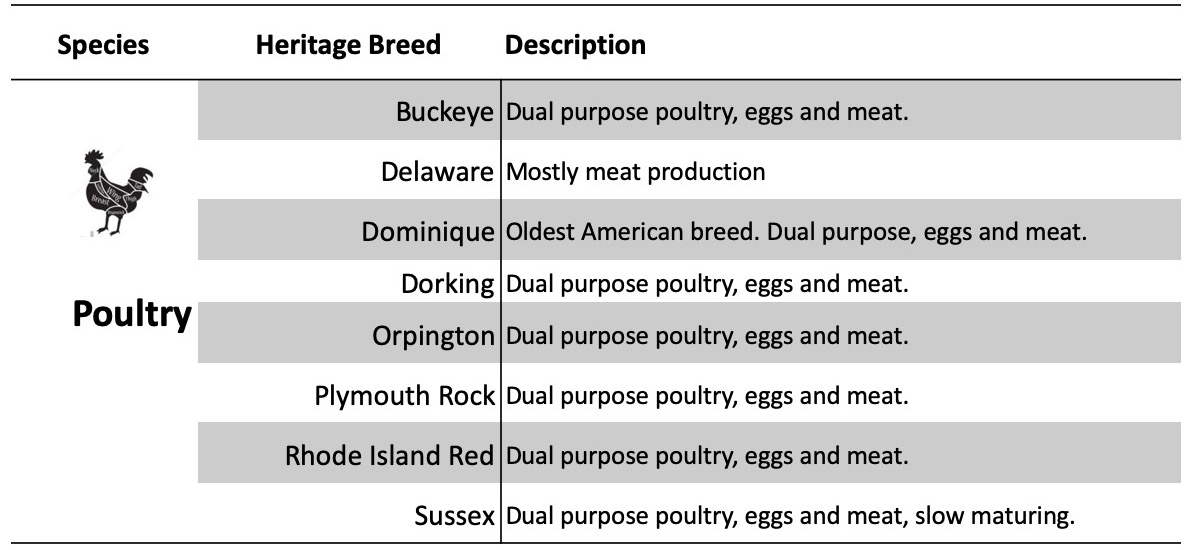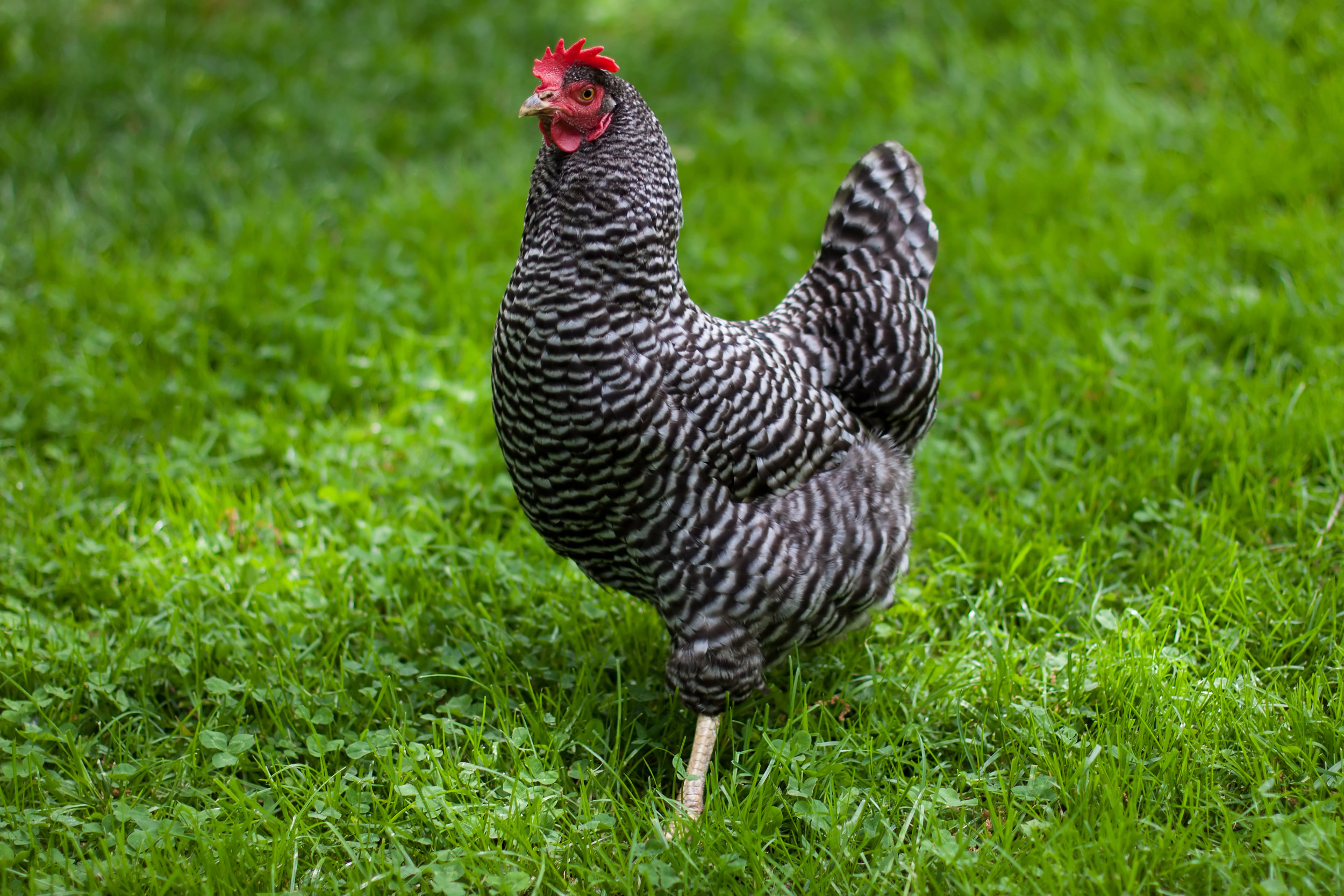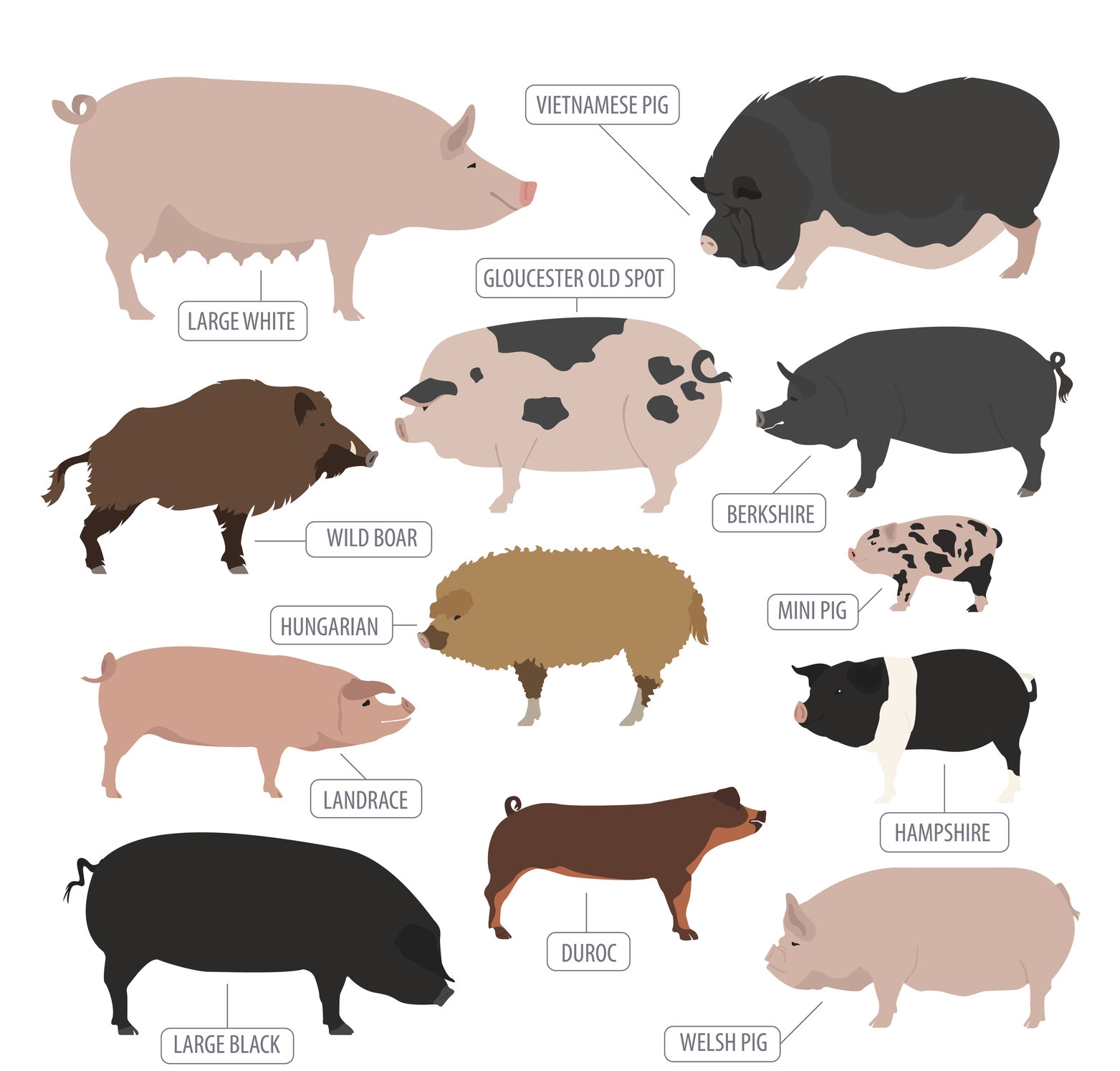About Organics and Heritage Breeds
Meat and Poultry Labeling
Certified Organic
Livestock must be raised on a “certified organic” farm or ranch according to United States Department of Agriculture (USDA) standards and fed only certified organic feed.
Naturally Raised
The term "naturally raised" in relation to meats and poultry refers to how the live animals were raised prior to slaughter, and it falls under a voluntary marketing claim regulated by the USDA’s Agricultural Marketing Service (AMS). According to USDA guidelines, animals labeled as “naturally raised” must be raised without the use of growth promotants, antibiotics (except for parasite control), or animal by-products in their feed. However, this claim is not part of the USDA’s mandatory labeling system and must be substantiated with detailed documentation, including a written protocol, signed affidavit, and traceability mechanisms1.
It's important to note that the term “natural” on meat labels has a specific meaning—it refers only to the processing of the meat after slaughter, meaning it contains no artificial ingredients or added color and is minimally processed. Because “naturally raised” is a voluntary and loosely regulated term, consumers are encouraged to look for third-party certifications or additional label details to ensure transparency and animal welfare standards.
No Antibiotics
The term "No Antibiotics" on meat and poultry labels means that the animals were never given antibiotics at any point in their lives, from birth to slaughter. This includes antibiotics used for disease prevention, treatment, or growth promotion. To use this label, producers must submit detailed documentation to the USDA’s Food Safety and Inspection Service (FSIS), including a written protocol and a signed affidavit that verifies no antibiotics were administered.
In 2024, the USDA strengthened its guidelines to ensure greater transparency and consumer trust. It now strongly encourages third-party certification and/or routine testing to verify these claims. This helps prevent misleading labels and ensures that producers using “No Antibiotics Ever” or similar claims are held to consistent standards.
No GROWTH Hormones
Beef cattle may be given growth hormones unless labeled otherwise.
Pork and poultry: While growth hormones are not approved for use in poultry, certain reproductive hormones may be used in swine.
Labels claiming “No Hormones” must be accompanied by a USDA disclaimer such as: “Federal regulations prohibit the use of hormones in poultry.”
Grass Fed Meats
According to the USDA, beef, bison, lamb, and goats can be labeled as grass-fed if they forage on a diet of grass, legumes, and grain crops in their vegetative or grain state. They must be allowed pasture to roam. This is a voluntary marketing claim that must be supported by documentation. Third-party certification is strongly encouraged to ensure transparency.
Free Range
The USDA designates that free-range poultry be allowed access to the outdoors as an alternative to battery cages and barn floors, but there is no requirement that they be given access to pasture. Free-range chicken eggs, however, do not have a legal definition in the United States. There is no legal standard for free-range meat.
Cage Free
Cage free usually refers to egg production and means that the animals have not been penned in battery cages but are allowed access to move around whether either on a barn floor or outdoors.
Most animals raised for food in the United States are allowed to be administered antibiotics to maintain their health, and except for veal, are allowed to be given growth hormones to promote weight gain. Although the normal diet for cattle and sheep is grass-based, the addition of corn and other grains helps them to quickly gain weight. Grain-based diets pose health risks to ruminant animals but it does help them to rapidly gain weight. In recent years alternative farming methods, traditional processes that predate the high-production farming models in use today, have seen a resurgence because they allow animals access to the outdoors, and the ability to graze on a natural diet of grass. Alternative or sustainable farming methods include organic and grass-fed methods.
Heritage Breeds
Heritage breeds are traditional livestock lines that predate the advent of industrial agriculture. They are often more resilient, slower-growing, and genetically diverse, helping to preserve biodiversity. Wagyu beef, from Kobe, Japan, and Berkshire pork are two examples. However, the term “heritage” does not guarantee humane treatment, access to pasture, or superior flavor. Examples include Berkshire pork and Wagyu beef. Heritage breeds help keep diversity within livestock species and help maintain the earth’s bio-diversity.
PRIVATE LABEL CERTIFICATION
Some trade groups and meat packers have established their own private label meat grading programs as a marketing tool to differentiate their products from those of other meat processors. The characteristics go beyond the requirements for official USDA grades. Some programs require USDA approval while others do not, and include, among many others, programs for certified beef, grass-fed cattle, and free-range veal. These products should be evaluated based on their quality, yield, and consistency in relation to the needs of each foodservice operation.
Chianini
Waygu
Texas Longhorn
Highland
Rhode Island Red
Plymouth Rock Chicken















